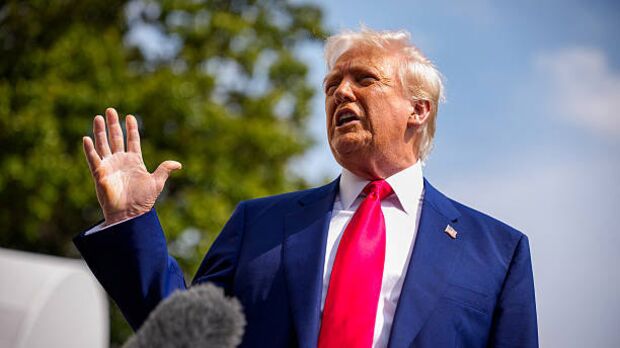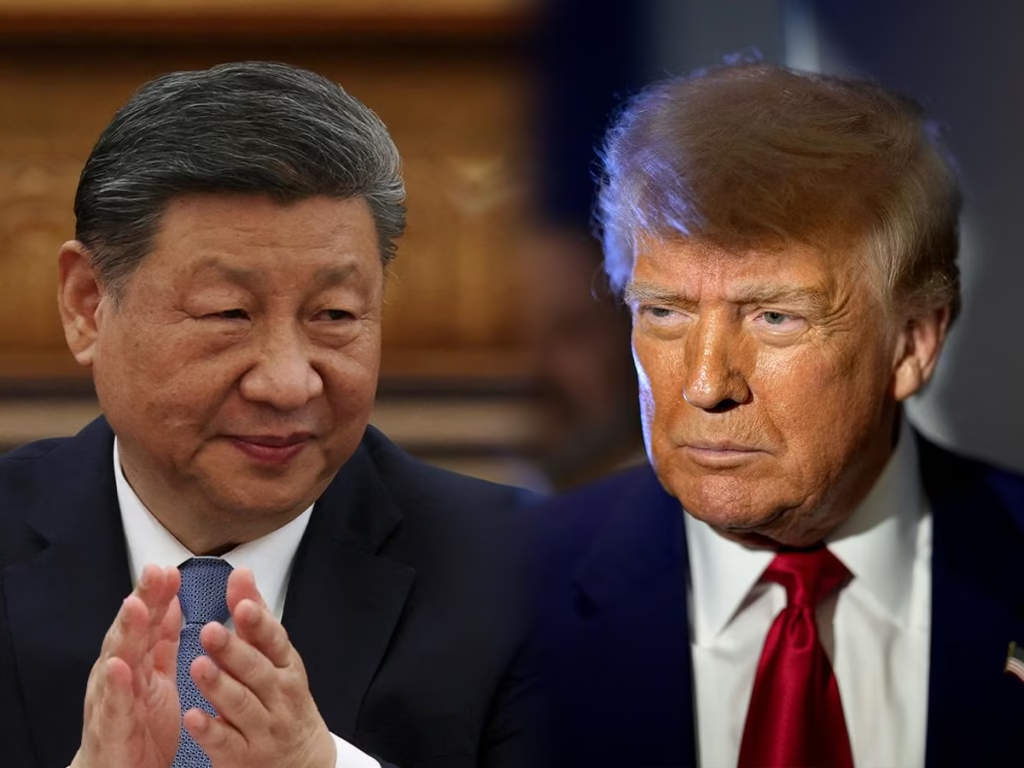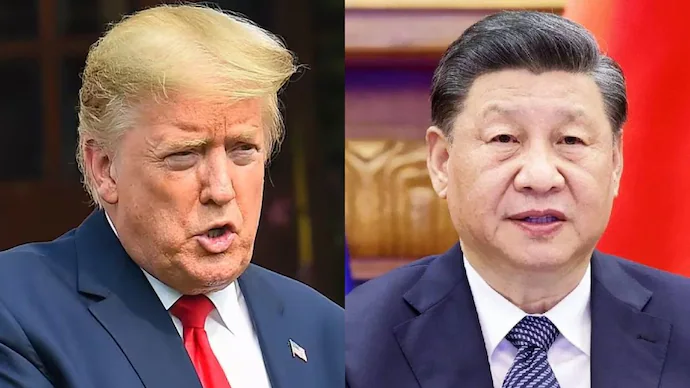In the latest update of the ongoing issue between the US-China trade war, tensions have once again became very serious. US President Donald Trump has taken a bold step by threatening China with a 50% tariff on all its exports to the United States. In response, China has refused to back down, labeling the move as “blackmail” and promising to retaliate with strength and determination.
As both global superpowers continue to clash economically, the world watches closely. This renewed confrontation is not just about tariffs—it’s about global dominance, trade policies, and political pride. The US-China trade war has now entered a dangerous phase, with both countries standing firm on their positions.
Trump’s Latest Warning

President Trump recently issued a stern 24-hour ultimatum to Beijing. He demanded that China reverse the 34% retaliatory tariffs it imposed last week on American goods. If not, the US will move forward with a sweeping 50% tariff on Chinese imports. This escalation has shocked markets and raised concerns among global investors and economists.
According to Trump, the United States can no longer tolerate unfair trade practices from China. “It’s time we protect our industries and workers,” he said during a press briefing. With this strong stance, Trump threatens China with a 50% tariff, seeking to pressure the Chinese government into negotiations on American terms.
China Refuses to Back Down
However, China quickly responded to the US threats with a defiant tone. Officials from Beijing declared that they will not be intimidated. In fact, they called Trump’s move a form of economic coercion. A spokesperson from China’s foreign ministry said, “This is an act of blackmail. “China will not be pushed around. We are ready to fight this US-China trade war to the end.”
The Chinese government emphasized its resolve to act as a counterweight to what it called the United States’ “unilateral bullying.” Rather than surrender, China is now preparing a new set of retaliatory measures that could affect key American exports, including agricultural goods and technology products.
Rising Global Concerns

With Trump threatening China with a 50% tariff, people around the world are getting worried. Global markets are starting to show signs of trouble. Investors are afraid that the long-running US-China trade war could hurt the world economy. Countries that depend a lot on trade with other nations may be hit the hardest.
Experts say the damage could be big. “Tariffs this high can hurt businesses, make prices go up for shoppers, and slow down global trade,” said a senior expert from the World Trade Organization. Even so, both the US and China don’t seem ready to give in.
A Brief History of the US-China Trade War
To understand the latest confrontation, it is essential to look at the origins of the US-China trade war. This conflict began in 2018 when the Trump administration accused China of unfair trade practices, including intellectual property theft, currency manipulation, and government subsidies to local firms. As a result, the US imposed tariffs on billions of dollars’ worth of Chinese products.
China retaliated swiftly, targeting American goods such as soybeans, pork, and automobiles. Since then, the US-China trade war has witnessed multiple rounds of tariffs, negotiations, and breakdowns. Although there have been temporary truces, long-term resolution remains elusive.
What’s at Stake Now?
If the US follows through and Trump threatens China with 50% tariff implementation, the impact could be severe for both countries. For China, losing access to the American market would be a massive blow to its manufacturing sector. For the US, higher tariffs could mean increased prices for electronics, clothing, and other consumer goods.
Moreover, American farmers and manufacturers who rely on exports to China might face steep losses. Many industry leaders are urging both governments to return to the negotiation table and seek a diplomatic solution to the US-China trade war.
Beijing’s Strategy Going Forward
Even with the big threat ahead, China appears ready for a long battle. According to insiders, the Chinese government is planning to diversify its trade partnerships, focusing more on countries within the Asia-Pacific region and Europe. This strategy aims to reduce dependence on the American market.
Additionally, Beijing may offer more support to its local industries to cushion the blow from US tariffs. As Trump threatens China with a 50% tariff, China is also looking to strengthen alliances with other global economic powers, such as Russia and the European Union, to offset the damage from the US-China trade war.
Can Negotiations Still Happen?
While both countries have argued strongly, there is still hope for talks. Diplomatic sources suggest that backchannel negotiations are ongoing. Several American business groups and political leaders are urging President Trump to seek compromise before taking further action under theTrump tariff threat.
China, too, has signaled that it is open to dialogue—if the US agrees to fair and respectful terms. A senior Chinese trade official said, “China doesn’t fear a trade war, but we would rather work together.” However, until either side makes a clear move toward compromise, the US-China trade war will likely continue.
The World Is Watching
As events continue, one thing is clear: the US-China trade war is far from over. With Trump threatening China with 50% tariff hikes and China promising tough retaliation, tensions are at their peak. The next few days could determine whether the two economic giants find common ground—or spiral further into a damaging trade conflict.
World leaders, business people, and even regular consumers are all being affected by this serious situation. Now, more than ever, it’s important for countries to talk and solve problems peacefully. As the US-China trade war intensifies, the world waits anxiously for a peaceful resolution. Read more international news and controversies.



